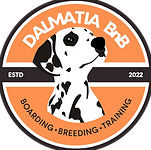Understanding Hyperuricosuria in Dalmatians and the Role of Back Breeding
- Rebecca Price
- Jan 3
- 4 min read

Introduction
Hyperuricosuria (HUU) is a genetic condition commonly found in Dalmatians that affects their ability to metabolize purines, leading to the formation of urate stones in the kidneys and bladder. This condition can cause severe pain, urinary blockages, and even kidney failure if left untreated1. In an effort to address this issue, back breeding has been employed to introduce healthier genetic traits into the Dalmatian breed.
What is Hyperuricosuria?
Hyperuricosuria is a hereditary defect in the metabolic system that affects the breakdown of purines, which are compounds found in many foods. In most dogs, purines are converted into allantoin, a soluble substance that is easily excreted in the urine1. However, in Dalmatians, purines are broken down into uric acid, which can crystallize and form stones in the urinary tract. These stones can cause irritation, inflammation, and blockages, leading to severe health issues1.
Symptoms and Diagnosis
Dalmatians with HUU may show symptoms such as difficulty urinating, frequent urination, blood in the urine, and accidents in the house. Diagnosis typically involves urine sediment analysis, ultrasound, or DNA testing to confirm the presence of the genetic mutation responsible for HUU2.
Treatment and Management
Treatment for HUU often involves dietary management to reduce purine intake, increased water consumption to dilute the urine, and medications like allopurinol to decrease uric acid production. In severe cases, surgical intervention may be necessary to remove urinary stones2.
The Role of Back Breeding
Back breeding, also known as breeding back, is a method of selective breeding aimed at reintroducing desirable traits from an extinct or wild ancestor into a domestic breed. In the case of Dalmatians, back breeding has been used to introduce genes from other breeds, such as the Pointer, to reduce the incidence of HUU while maintaining the breed's distinctive characteristics1.
The Process of Back Breeding
The process involves mating Dalmatians with dogs from other breeds that do not carry the HUU mutation. The resulting offspring are then selectively bred over several generations to achieve a balance between the desired traits and the reduction of HUU1. This method has been successful in producing "low uric acid" Dalmatians that are less prone to developing urate stones.
Dr. Robert Schaible in 1973 bred a male pointer (low uric acid) to a female Dalmatian (high uric acid). This is how we have LUA's today. read more about this process in the link below.
Benefits and Challenges
The primary benefit of back breeding is the reduction of genetic health issues like HUU, leading to healthier and more robust dogs. However, this process can be challenging and time-consuming, requiring careful selection of breeding pairs and long-term commitment from breeders1.
Understanding HUA and LUA
High Uric Acid (HUA) Dalmatians:
Description: Most Dalmatians are HUA, meaning they have high levels of uric acid in their urine. This makes them prone to forming kidney and bladder stones3.
Management: HUA Dalmatians require a diet low in purines, plenty of water, and frequent potty breaks to prevent stone formation.
Low Uric Acid (LUA) Dalmatians:
Description: LUA Dalmatians have normal levels of uric acid and are not prone to forming urate stones. This is achieved through back breeding with Pointers3.
Benefits: LUA Dalmatians can eat a normal diet and are less likely to suffer from urinary blockages and related health issues.
Benefits of HUA
Here at Dalmatia BnB we breed HUA Dalmatians. There are several reasons for this.
Breeding High Uric Acid (HUA) Dalmatians has its own set of benefits, especially for those who appreciate the traditional characteristics of the breed. Here are some key advantages:
Preservation of Breed Characteristics: HUA Dalmatians maintain the classic traits that have been historically associated with the breed, such as their distinctive coat pattern and energetic demeanor.
Genetic Diversity: Breeding HUA Dalmatians contributes to the genetic diversity of the breed, which can be beneficial for the overall health and resilience of the population.
Historical Significance: HUA Dalmatians are the traditional form of the breed, and breeding them helps preserve the historical lineage and legacy of Dalmatians.
Availability: HUA Dalmatians are more commonly available and may be easier to find compared to LUA Dalmatians, which are still relatively rare.
Dietary Management: While HUA Dalmatians require a low-purine diet to prevent urinary stones, many owners find it manageable with proper guidance and care.
It's important to note that while HUA Dalmatians have these benefits, they do require careful management to prevent health issues related to uric acid levels. Regular veterinary check-ups, a proper diet, and plenty of water are essential for their well-being.
Conclusion
Hyperuricosuria is a significant health concern for Dalmatians, but through the use of back breeding, breeders have made strides in reducing the incidence of this condition. By understanding the genetic basis of HUU and employing selective breeding techniques, it is possible to produce healthier Dalmatians while preserving the breed's unique traits. Managing diet and regular vet checkups can help prevent the occurrence of uric acid stones in Dalmatians. This approach highlights the importance of responsible breeding practices in maintaining the health and well-being of our beloved pets.
For more in depth genetic information and the story about Dr. Robert Schaible, visit https://dcaf.org/dalmatian-health/urinary-stones/lua-dalmatians/
.png)




Comments